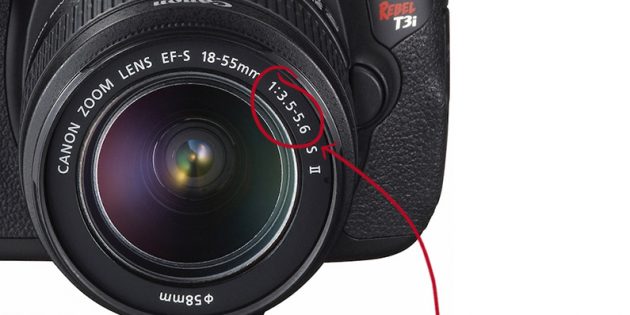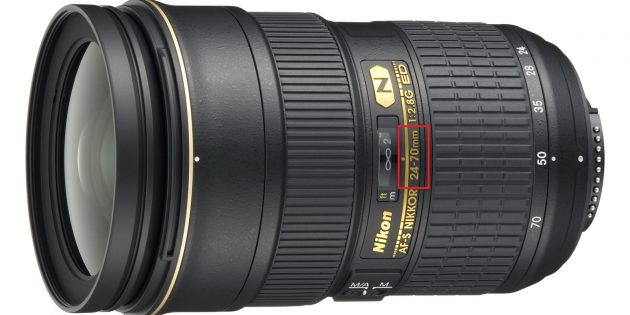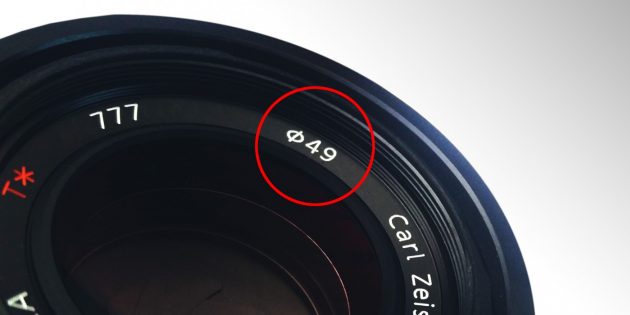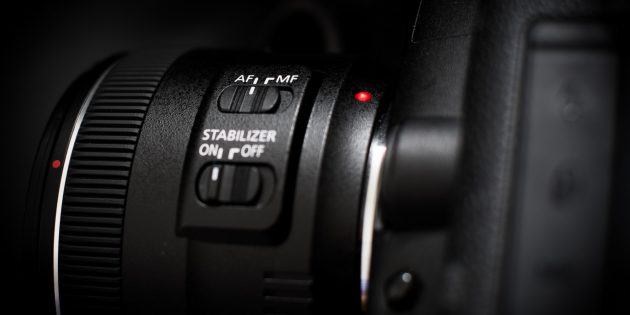The aperture of the lens is similar to the pupils — it opens as much as a lot of light should reach the camera sensor. The maximum aperture is indicated by the letter f. It can range from f/0.95 to f/22. The designations vary — instead of f/2.8, you can see 1:2.8. But the number always indicates the same thing — the maximum aperture.


The focal length of the lens, that is, the distance from the clearest image to the camera sensor, is indicated in millimeters. For lenses without magnification, this is one number, and for those that can zoom in, two numbers, for example, 18-55 mm.
The smaller the focal length, the larger the piece of the photographed object will fall into the picture. Therefore, for example, wide-angle lenses have a focal length range somewhere from 4.5 to 30 mm. This indicator is usually indicated on the lens next to the aperture.

To remove glare, change colors, or achieve beautiful effects, you can use lens filters. But first you need to find out its diameter. It is measured in millimeters — you can find it next to the symbol ø, indicating the diameter. Most often, this indicator is indicated on the front of the lens or engraved closer to the top of the side part where the filter is fixed.

Automatic focusing, which can be powered by a conventional motor or a quieter ultrasonic, allows you to keep the subject in focus without manually adjusting the depth of field. If you see optics with a switch marked AF/MF, you can quickly turn this function on and off, depending on whether you need precise focus control.
The most interesting functions are usually hidden behind designations specific only to a particular manufacturer. But don't let the abbreviations fool you — the technologies of different companies are often identical.
This function can be integrated into both the lens and the camera itself. It counteracts vibrations and other microscopic movements that make photos blurry. Image stabilization makes pictures clearer, especially when you shoot with a wider aperture. For different brands, the function is designated as follows:
Full-frame cameras use large sensors, which allows the camera to transmit more light, and the pictures are better. To use the entire surface of the sensor, you need a full-frame lens, which may have the following abbreviation:
Cameras with crop sensors are usually designed for the mass market or enthusiasts. They do not allow you to take the same high-quality pictures as full-frame cameras, but still produce better images than smartphones. Crop lenses can be recognized by the following abbreviations:
Such motors allow you to adjust the focus quieter and faster. They are more accurate than slower electronic motors, which are installed in inexpensive lenses, and are designated as follows:
Such lenses are much more accurate and durable than conventional consumer lenses. They use higher-quality glass and faster focal motors. They are usually protected from moisture and dust. Professional lenses are most often designed for full-frame cameras. You can find them like this:
Such optics eliminate chromatic aberration, a problem that causes colors to sort of stratify. It is usually visible at the edges of the photo. There are programs to eliminate chromatic aberration, but in fact, not everyone is able to notice the difference. Special lenses using different technologies can also remove such distortions: